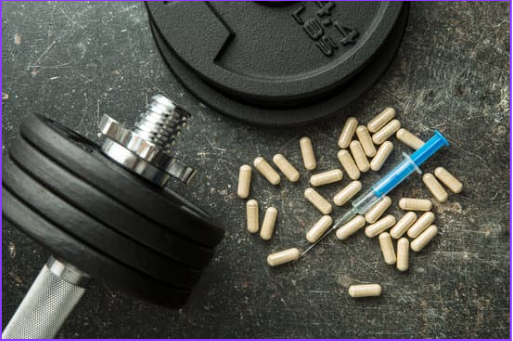The Growing Crisis of Steroid Addiction: Understanding the Risks and How Sanative Can Help
Introduction
In Cincinnati’s gyms, locker rooms, and online fitness communities, anabolic-androgenic steroids (AAS) have become a dangerous shortcut for those chasing a chiseled physique or peak athletic performance. These synthetic hormones, mimicking testosterone, promise rapid muscle growth but carry a hidden cost: steroid addiction. The growing crisis of steroid addiction affects young men, women, and even adolescents, driven by societal pressures and easy access. At Sanative Recovery and Wellness, we’re dedicated to helping Cincinnati residents break free from steroid addiction through personalized, holistic recovery plans. This blog explores the rise of steroid addiction, its causes, effects, and how Sanative’s evidence-based approach can support lasting recovery.
What Are Anabolic Steroids?
Anabolic-androgenic steroids are synthetic derivatives of testosterone, designed to promote muscle growth (anabolic) and male characteristics (androgenic). Medically, they treat conditions like delayed puberty or muscle loss from diseases like cancer, as noted by the National Institute on Drug Abuse (NIDA). However, non-medical use—common among bodybuilders, athletes, and fitness enthusiasts in Cincinnati’s fitness scene—has surged. Steroids like Dianabol, Deca-Durabolin, and Equipoise are often misused for quick gains, leading to serious health risks and addiction.
The Rise of Steroid Addiction
Approximately 30% of AAS users develop a dependence syndrome, continuing use despite harm, according to a 2014 study in the Journal of Substance Abuse Treatment. Steroids trigger dopamine release, creating psychological dependency tied to body image and self-esteem. Physical dependence occurs as the body halts natural testosterone production, leading to withdrawal symptoms like fatigue and depression. In Cincinnati, where fitness culture thrives, an estimated 375,000 young men and 175,000 young women nationwide have used steroids at least once, per NIDA data, with local trends mirroring this rise. Social media platforms like TikTok amplify the issue, with influencers promoting AAS to vulnerable audiences, including University of Cincinnati and Xavier University students.
Why Do People Use Steroids?
Steroid misuse stems from complex factors:
- Body Dysmorphia: Many users, especially those with muscle dysmorphia, feel their bodies are never muscular enough, a concern prevalent in Cincinnati’s fitness community.
- Athletic Pressure: Athletes, from local bodybuilding competitions to college sports, use steroids to gain an edge, despite bans by organizations like the NCAA.
- Societal Standards: Media and social platforms glorify muscular physiques, pushing young men and women to seek quick results.
- Accessibility: Steroids are readily available through gyms, online markets, or illegal labs, often with misinformation about safety, as highlighted by the U.S. Drug Enforcement Administration (DEA).
Practices like “stacking,” “cycling,” and “pyramiding” increase addiction risks, falsely believed to enhance benefits or reduce harm.
The Dangers of Steroid Addiction
Steroid addiction poses severe risks:
Physical Effects
- Cardiovascular Issues: Increased risk of heart attacks, strokes, and high blood pressure, as seen in studies linking AAS to heart enlargement .
- Hormonal Imbalances: Men may experience gynecomastia, testicular atrophy, and infertility; women face menstrual irregularities and masculinization.
- Liver and Kidney Damage: Oral steroids can cause liver tumors and kidney failure, per Mayo Clinic.
- Musculoskeletal Risks: Tendon ruptures are nine times more likely in AAS users, per a 2015 study in the American Journal of Sports Medicine.
- Adolescent Risks: Teens face stunted growth and long-term health complications.
Psychological Effects
- Mood Swings: “Roid rage” can lead to aggression, paranoia, or psychosis, as noted by NIDA.
- Depression and Anxiety: Withdrawal often triggers mental health crises, including suicidal thoughts.
- Body Dysmorphia: Users feel inadequate without steroids, perpetuating use.
Behavioral and Social Effects
- Secrecy: Hiding use strains relationships.
- Legal Risks: Illegal steroid purchases can lead to legal and financial issues, per the DEA.
- Neglect: Obsession with training disrupts work or school, impacting Cincinnati students.
Withdrawal and the Challenge of Quitting
Quitting steroids is tough due to withdrawal symptoms like fatigue, depression, and muscle loss, which can last weeks to months. Some users turn to other substances, like opioids, to cope, increasing risks. A 1999 study in Substance Abuse found 9.3% of men in opioid addiction treatment had misused steroids, highlighting crossover risks. Without support, relapse is common.
How Sanative Recovery and Wellness Can Help
At Sanative Recovery, we understand the unique challenges of steroid addiction. Our Cincinnati-based team offers tailored recovery plans to address physical, psychological, and social needs:
- Medical Support: Our clinicians will guide you to get any hormone therapy and withdrawal management to restore balance safely.
- Therapy: Cognitive-behavioral therapy (CBT) and counseling tackle body dysmorphia and self-esteem issues, with group sessions fostering community support.
- Holistic Care: We integrate nutrition counseling to rebuild health, drawing on our expertise in recovery nutrition.
- Local Resources: We connect clients with Cincinnati’s sober communities, gym alternatives, and campus resources at places like the University of Cincinnati for student-focused support.
- Personalized Plans: Whether you’re a student, athlete, or professional, we design plans to fit your lifestyle, with virtual and in-person options.
Contact us at Sanative Recovery or call 513-392-8400 to start your journey. For additional support, explore resources like SAMHSA’s National Helpline at 1-800-662-HELP.
Breaking the Stigma
Steroid addiction is often dismissed as vanity, but it’s a real substance use disorder. Stigma prevents many in Cincinnati from seeking help. At Sanative, we’re working to change this through education and outreach in local gyms, schools, and online platforms. By addressing root causes like body dysmorphia and offering compassionate care, we empower individuals to seek help without shame.
Conclusion
Steroid addiction is a growing crisis, but recovery is within reach. With Sanative Recovery in Cincinnati, you can access evidence-based treatment tailored to your needs. Don’t let steroids control your life—reach out today at 513-392-8400 or visit our contact page for support. Together, we can build a healthier, stronger future.


